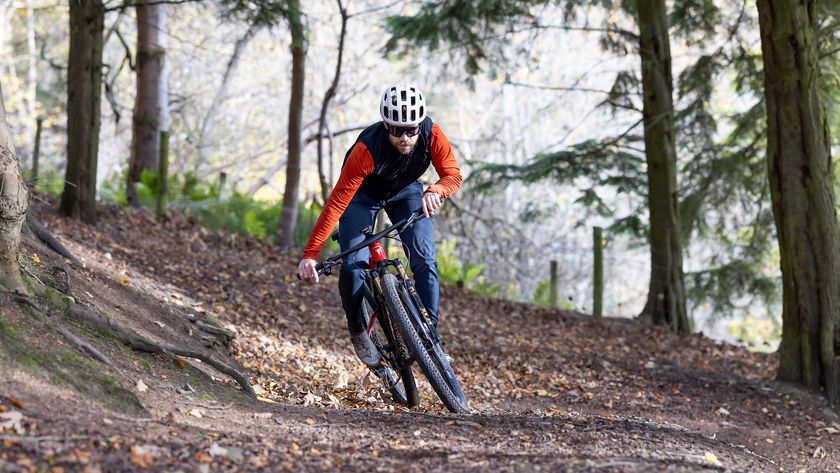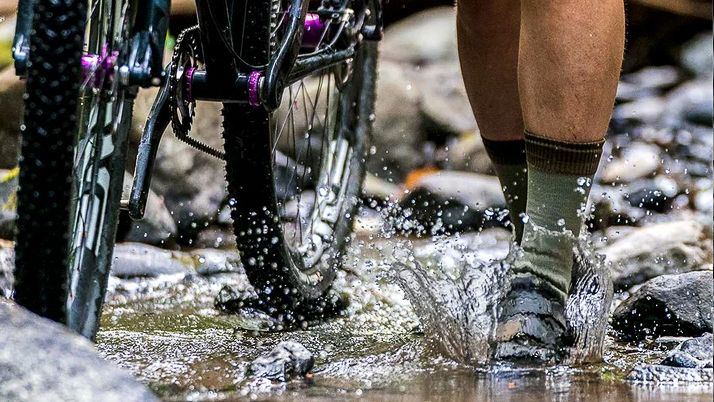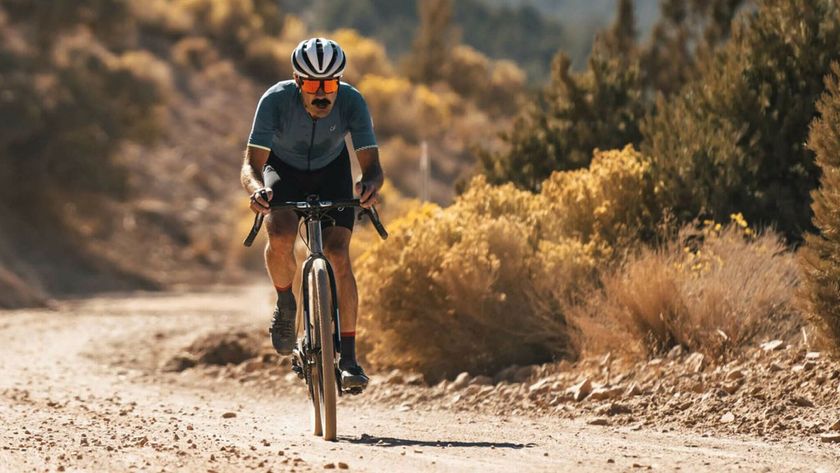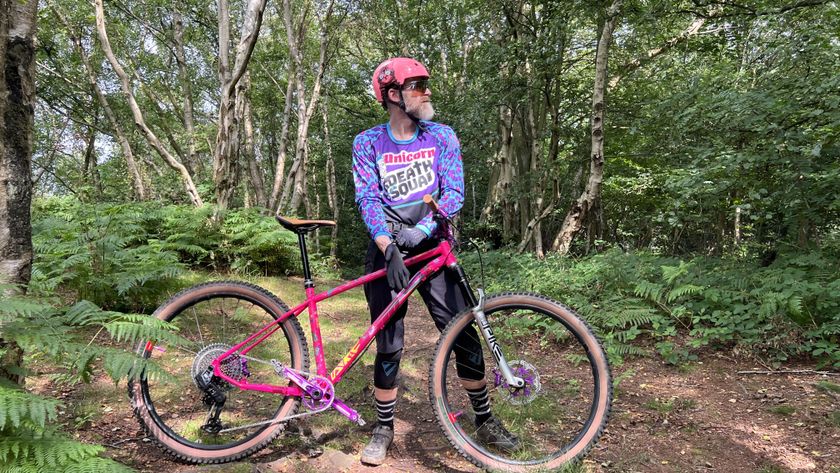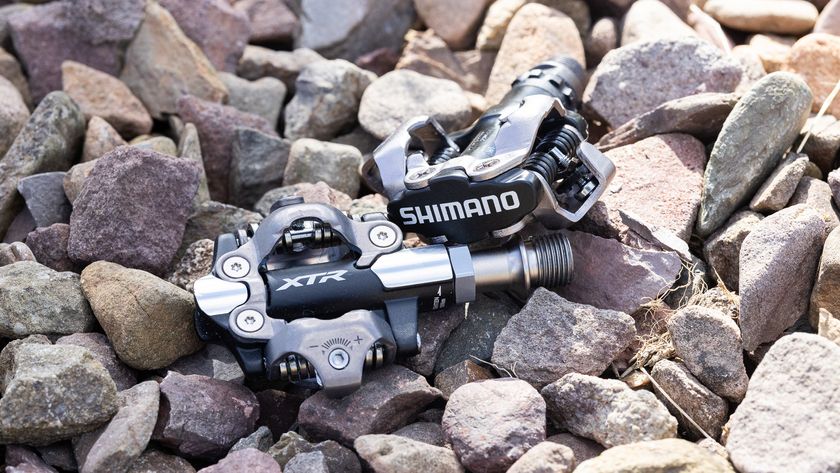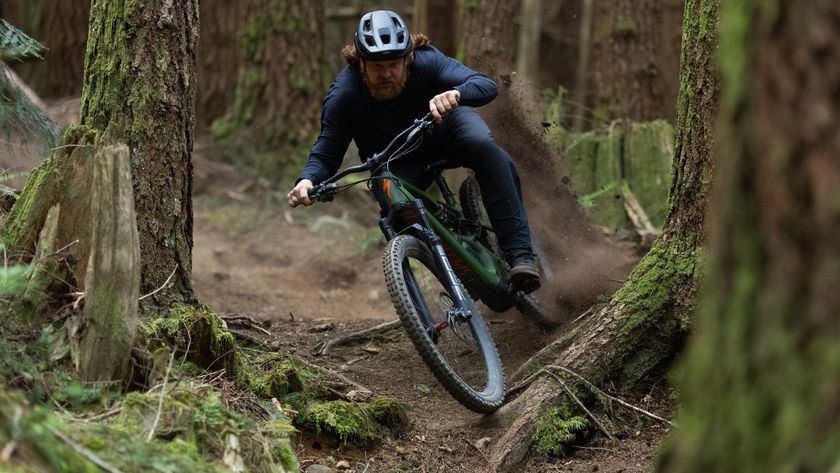Bespoken Word: the digital vs analog shifting debate
Electronic shifting offers many benefits - reduced weight, improved performance and better integration, but what is it like to live with and are we going to see all our controls turning electric soon?
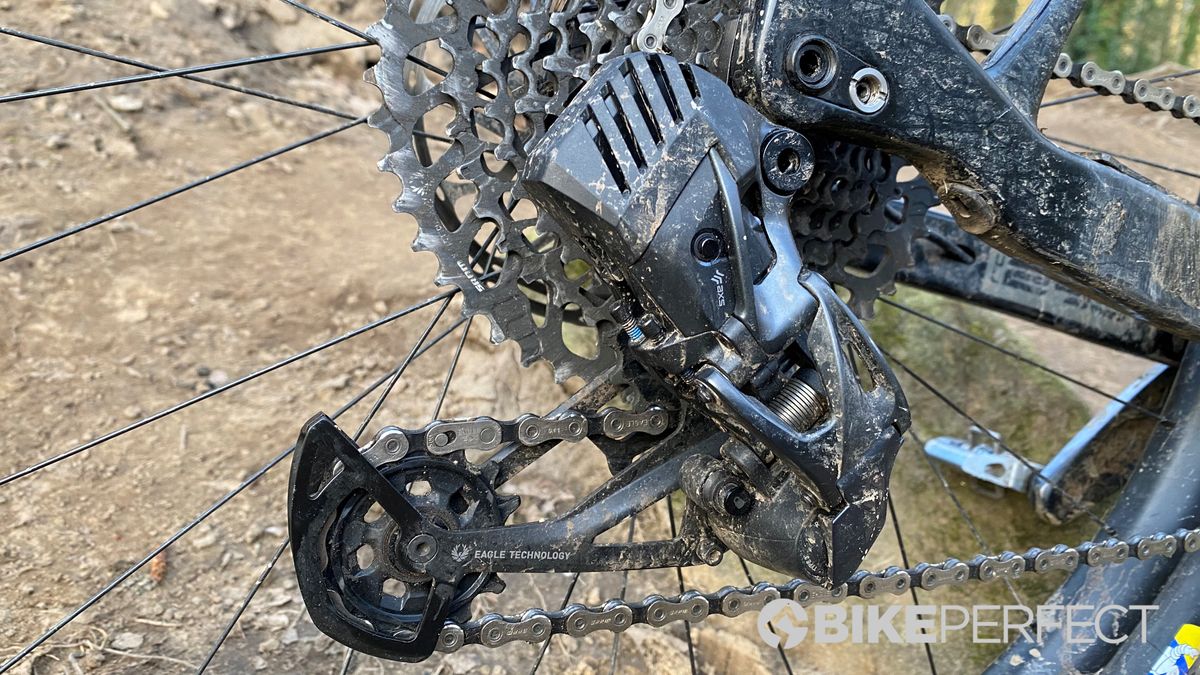
Electronic gears are rapidly becoming a must-have aspirational accessory for mountain bikers. For riders, it looks great, offers a whole new world of control customization, it's impressively reliable considering the tech and the environment it operates in, and it even sounds cool. For designers, it removes a lot of the frame packaging hassle of cabled transmissions and it's much easier to assemble when you’re building bikes.
Unlike road cycling, however, mountain biking involves gnarlier terrain, more mud and water, and super-long days in the saddle. Then there's the reality of stage racing and the gruelling topography that comes with it. The big question hinges around whether or not you need it?
First up, in terms of the execution and performance of SRAM’s electronic shifting systems, I’m a massive fan. I can’t fault Shimano’s XTR for how well it works when you’ve got the nest of cables, batteries and controllers all plugged together either. But there was no electric option in the last 12-speed upgrade of XTR which means Di2 hasn’t changed since Shimano launched the 11-speed configuration back in 2014. So while you can still buy it, the smart money has to be on waiting to see what Shimano introduces with the new Dura-Ace Di2 road gear already popping up on pro bikes and hoping that transfers to MTB soon.
Anyway, back to why I like wireless electric shifting. The ease of installation is such a massive breath of fresh air - especially when you’d otherwise be coaxing and cursing cables through an internally routed frame with all sorts of dead ends and catch points. Literally just bolt-on, press the relevant buttons, pair everything up and you’re good to go. Okay, it sometimes glitches the first time or two, but for the most part, it takes a minute and never more than five. In fact, the whole protocol is so easy I run the same shifter pod across two different bikes at the moment and it’s no harder to switch it across than swapping a front wheel.
No cables also means a super-clean aesthetic. That isn’t such a big deal at the mech end as it’s pretty busy back there and a loop of cable outer or a Di2 cable kind of gets lost against the backdrop of cassette teeth and spokes. Looking down at the bars and not seeing the usual nest of cables never fails to make me smile though, taking me back to the pure simplicity of running single-speed bikes in the 90s, even though the tech involved is at the opposite end of the spectrum. In fact, I love the cockpit cleanliness of the last AXS bike I built up so much that I’ve not fitted a dropper post yet because I don’t want to ruin the view with an extra hose/cable snaking around the front. So if you’re reading this SRAM, a 31.6mm Reverb AXS with a 150mm stroke - don’t flame me it’s an XC bike - would be perfect.
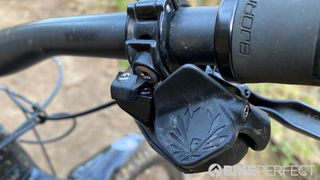
The ability to combine components within the same ‘ecosystem’, as SRAM likes to call it, is awesome, too. There’s no fight between different cable ratios so I don’t have to unbolt the cable cam fins from under mechs and swap them over to make a 42T cassette and derailleur work with drop bar levers anymore. Nope, I can just pair whatever AXS rear mech and cassette pairing I want with whichever shifter I want so the Eagle can fly on a gravel/road bike or I can run a 10-36T cassette and a Red road shifter on that XC bike I was talking about to really drop the weight down.
Actually, I should point out that I’m asking for trouble there, and it’s definitely not something I would encourage. Not because it doesn't work (it does, deliciously well and that flat-top-chain look is to die for) but because dedicated AXS dirt mechs have a really smart damage-dodging system that completely disengages the mechanical/electrical guts of the mech if it takes a hit and then reengages them immediately to keep you powering on. It really works and while smacking several hundred pounds of rear mech into a rock will always be a sickening moment, all my AXS mechs (obviously they’re on test loan, not actually ‘mine’) have scarring but still work totally fine. Even that Rival gravel mech that got knocked into the spokes in a proper heart- and ride-stopper still works fine now that I’ve replaced the gear hanger and the top jockey wheel.
Where was I again? Oh yeah, basically you can swap any AXS system around to create your ideal hybrid/mullet setup and that even includes the luxuriously smooth Reverb seatpost, which I reckon is the closest you’ll get to Thor’s hammer in terms of component cool. Just don’t do the road mech on MTB thing, as that’s a real Loki move...
As well as being able to connect whatever you want wirelessly - which is still magical for a boomer like me - you can also program your controllers to work how you want. Okay, so that’s not as big a deal as it is on a road/gravel setup with twin rings where you can do all sorts of clever shift pattern and both-levers-at-once fanciness, because a single-ring MTB configuration will always be sequential and you’ve only got one paddle. You can push or pull that paddle in three different places to make it shift up or down though and - another boomer delight moment, that youngsters will wonder what the fuss is about - you can do it all with an app on your phone (that will also tell you a whole lot about which gears you’ve used, how far you’ve gone, if your batteries need recharging, etc.).
And that’s where things start to separate from a total fanboy situation for me. While the shifts are so light and instant (you could never mistake them for a cable shift) I find it easy to make mistakes with the shifting. The paddles are plenty big enough, there’s no worry about long lever sweeps and I can use the front nudge button too, even though my brain has so far refused to completely work out which button does what. So I switched the controls around (in seconds, on my app, look at that boomer go) and that made it worse. It wasn’t that it was less intuitive, but it wasn’t more intuitive either.
It’s also moved me away from the default settings so that when a new AXS bike comes in for test, the shifts might be instant but the connection from the brain to thumb/finger is more glacial than synaptic. Cue regular drops into barely turnable gears at the base of climbs or suddenly spinning out when I need a bit more grunt on the run in to that jump. But this is purely just a personal issue and one that I’m sure will resolve itself once I just go back to default settings and spend enough time on same-way setups to make it intuitive in exactly the same way as my brain can shift between Shimano, SRAM and Microshift without buffering.
- Best mountain bike cranks: boost your power on any MTB trail
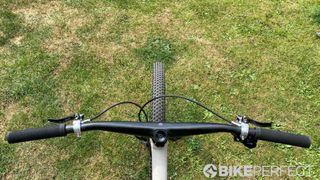
While the batteries don’t last forever, you don’t have to be particularly diligent to keep them more than full enough to dodge any issues. I’ve submerged AXS systems in all sorts of slop, streams, snow, sand and everything else you’d think electric bits would hate and they haven’t flinched. I’ve shifted when I shouldn’t have, reversed decisions mid-change both deliberately and accidentally but never yet caught it out and GX works just as well as XX1. And for all the people picking up a GX AXS rear mech and thinking, ‘damn that’s heavy’ yes you’re right, but weigh a complete wired group with all the cables and it’ll only be 45g lighter than the wireless group. If you look at the recently introduced Rival AXS road/gravel group then price differences are likely to drop dramatically too, as the volume of e-groupsets being made increases.
All the mechanical issues I have had with AXS setups have been situations that could have happened on analogue kits, too. Obviously, you don’t have to worry about cable stretch, but there have been a couple of mech-into-spoke moments and there have been a couple of slight knocks of gear hangers that have needed re-indexing. A quick dive onto YouTube has told me which button chord to play to get it all sorted in a digital version of 'twisting the barrel adjuster', but again there’s that electric gripe. That nagging fear that - because it’s not just a thumb trigger attached to a pulley, pulling a cable attached to a cam on the rear mech - if something goes really wrong then there’s very little I can do. But then I’m in exactly the same situation with my van, my computer, my phone and my internet connection, so is the shift to more electrification of bike inevitable? Is it me that’s outdated not the operating system? As electric shifting and component actuation becomes more affordable and common, are we going to see good old-fashioned cables being edged out by wireless-specific frames in the same way front mechs have nowhere to live now?
Or are we just worrying unduly about yet another option being added to the mountain biking equipment list? After all, does it matter that some will see it as an aspirational ‘essential’ and others as the electric antichrist if we can still choose what we buy and use based on our own preferences and pocket depth? I reckon there are a lot more serious and interesting strategic issues facing mountain biking and many more positive things we should be thinking about than how we shift gear, and I’ll be getting into more of that in the column again soon.

Guy Kesteven has been working on Bike Perfect since its launch in 2019. He started writing and testing for bike mags in 1996. Since then he’s written several million words about several thousand test bikes and a ridiculous amount of riding gear. He’s also penned a handful of bike-related books and he reviews MTBs over on YouTube.
Current rides: Cervelo ZFS-5, Specialized Chisel, custom Nicolai enduro tandem, Landescape/Swallow custom gravel tandem
Height: 180cm
Weight: 69kg
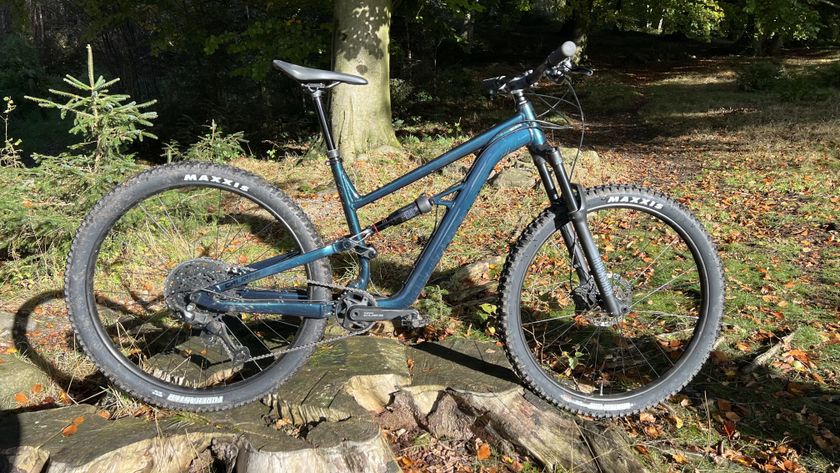
Don't buy a budget hardtail! The full-sus Calibre Bossnut is the best-value MTB right now with a massive £500 price cut in this Black Friday MTB deal
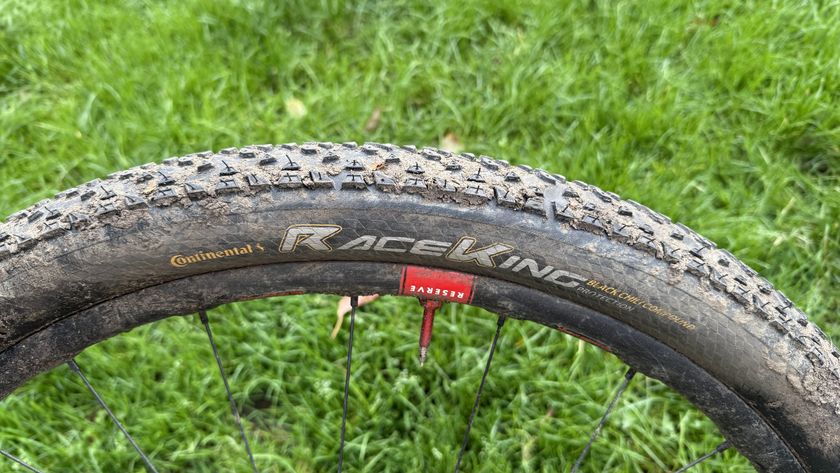
Continental’s Olympic and World Championship XC winning Race King Protection is the fastest rolling MTB tire I’ve ever ridden, but it’s not for the nervous
